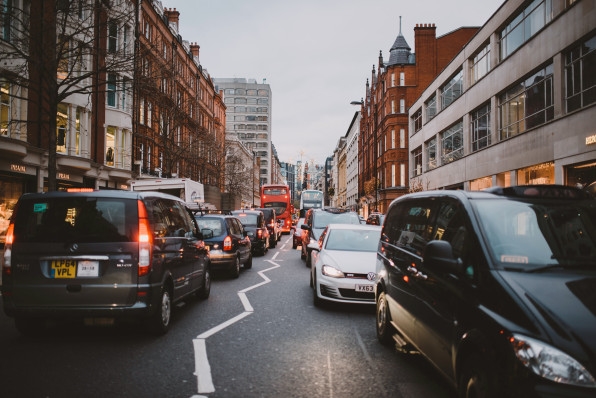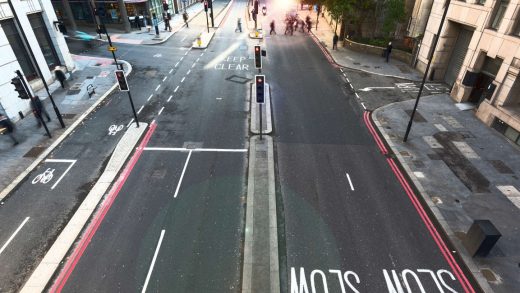Every driver in London soon might have to pay a fee any time they take a car trip
By 2024, all Londoners could be subjected to a charge for every car trip they make, depending on policy decisions made by Sadiq Khan, the city’s mayor.
Khan announced a plan to delegate the consideration of various options to London’s transport department, Transport for London (TfL), with a focus on smart road pricing, which could produce a “pay-as-you-drive” form of charging. The action would represent a further push by the Mayor’s office to meet net-zero goals, and act as a “nudge” for Londoners to walk, cycle, or use public transport to help reduce emissions and pollution.
The announcement follows a City Hall-commissioned report, which found that in order to fulfill the zero-carbon emissions target by 2030, the British capital still needs to drive down car journeys by 27%. Khan has already taken steps to mitigate transport emissions, notably with the Ultra Low Emission Zone (ULEZ), whereby the city charges 12.50 pounds (the equivalent of about $17) to owners of the most polluting vehicles driving in Inner London. In the month after Khan expanded ULEZ from Central London to Inner London in October 2021, noncompliant vehicles present in the zone on weekdays decreased by 37%.

But, the report stressed there’s more to do, and Khan voiced his intention to implement one of four further policy ideas by May 2024, the end of his mayoral term, all of which he’s asked TfL to investigate. One is to expand ULEZ again, this time to all of Greater London’s 32 boroughs, an area increase of four times the current size, to cover a population of nearly nine million.
Another option is to enact a clean-air charge for each journey taken in any petrol or diesel car. Harnessing smart technology, the hope is that this could generate a suitable price based on such factors as distance traveled, time of day, type of vehicle, and public transport alternatives for the route taken. The current thinking is the charge could be up to 2 pounds (about $2.72). “That is the sort of ballpark we are talking about, so it’s cheaper to jump on a bus than it is to jump in your car,” Khan said at a press briefing. A third option could be combining both the ULEZ expansion and clean-air charges.
The final option is to set a levy, of 3.50 pounds to 5.50 pounds per day (or about $4.75 to $7.50), for out-of-towners driving into Greater London from elsewhere in the country. This “boundary tax” is the only option that Khan doesn’t have the power to enact alone, and would need support from the U.K.’s Tory government. Transport Secretary Grant Shapps has previously opposed this, saying it unduly punishes people living in nearby suburbs who may regularly enter the boundary to visit relatives.
The mayor is also receiving pushback from critics, including the RAC, one of Britain’s major roadside-assistance companies, which released a statement decrying the idea for being financially hard on people who rely on driving to and from work—especially on “carers, tradespeople, and nighttime economy staff”—though Khan’s office has said there would be exceptions for disabled and low-income Londoners.
The proposal has gained praise from proponents, including Rosamund Adoo-Kissi-Debrah, mother of Ella Adoo-Kissi-Debrah, who died at age nine from pollution in South London, which prompted new investigations into the health risks of pollution in the capital.
Also, the chairman of C40 Cities, a group of nearly 100 world mayors combatting the climate crisis, Khan has led a charge on emissions in his city, and aims to focus squarely on transport versus other sectors, given its disproportionate contributions. Car use in London has now climbed back to its pre-pandemic levels, and while workplace and household emissions decreased by about 60% and 40%, respectively, between 2000 and 2018, transport emissions fell only by 7%.
Fast Company , Read Full Story
(32)



